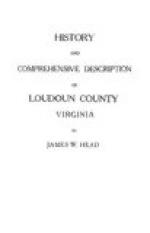[Footnote 10: For the bulk of the information appearing under this caption the author is indebted to Carter’s and Lyman’s Soil Survey of the Leesburg Area, published in 1904 by the United States Department of Agriculture.]
That part of the County lying east of a line drawn from the Potomac River near Leesburg, by Aldie to the Fauquier line, is much more unproductive than the western portion, partly on account of an inferior soil, and partly in consequence of an exhausting system of cultivation, once so common in eastern Virginia, i. e., cropping with corn and tobacco without attempting to improve the quality of the soil. When impoverished, the lands were thrown out to the commons.
Large tracts that formerly produced from thirty to forty bushels of corn to the acre, still remain out of cultivation, though many of the present proprietors are turning their attention to the improvement of these soils and are being richly rewarded.
In this section, particularly along Goose Creek, trap-rock occurs, sometimes covering large surfaces, at other times partially covered with indurated shale, formed from the red shale of this region which has become hardened by the heat of the intruding trap. Where this rock occurs covering large surfaces, nearly level, “the soil is a dark brown colored clay, very retentive of moisture and better adapted to grass than grain.... A deficiency of lime probably occurs here, and there may be some obnoxious ingredient present. Minute grains of iron sand are generally interspersed through this rock, and as it is not acted upon by atmospheric influences, its combination may contain some acid prejudicial to vegetation. Where this rock is thrown into more irregular elevations, and is apparently more broken up, the soil is better."[11]
Near the Broad Run Bridge the soil is deplorably sterile. “In many places it is but a few inches in thickness, and the rock below, being compact, prevents the water from penetrating much below the surface, thus causing an excess of water in rainy weather, and a scarcity of it in fair weather. The red shale does not appear to decompose readily, as it is found a short distance beneath the surface, and the strata dipping at a low angle, prevents the water from freely descending into this kind of soil."[12]




